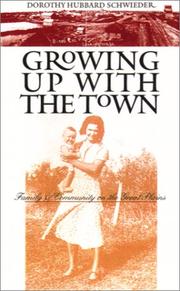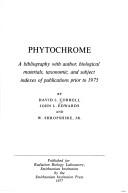| Listing 1 - 10 of 32 | << page >> |
Sort by
|
Book
ISBN: 0803290934 0803290950 9780803290952 9780803269620 0803269625 9780803290938 9780803290945 Year: 2016 Publisher: Lincoln
Abstract | Keywords | Export | Availability | Bookmark
 Loading...
Loading...Choose an application
- Reference Manager
- EndNote
- RefWorks (Direct export to RefWorks)
Indians of North America --- History. --- Great Plains --- Plains, Great --- Northwest, Canadian --- West (U.S.)
Book
ISBN: 1496200799 1496200772 9781496200778 9781496200785 1496200780 9781496200792 9780803249516 0803249519 9780803249516 Year: 2017 Publisher: Lincoln
Abstract | Keywords | Export | Availability | Bookmark
 Loading...
Loading...Choose an application
- Reference Manager
- EndNote
- RefWorks (Direct export to RefWorks)
Physical geography --- Geology --- Geography --- Geognosy --- Geoscience --- Earth sciences --- Natural history --- Great Plains. --- Plains, Great --- Northwest, Canadian --- West (U.S.)
Book
ISBN: 1496216350 9781496216359 9781496215499 1496215494 9781496216335 9781496216342 Year: 2019 Publisher: Lincoln
Abstract | Keywords | Export | Availability | Bookmark
 Loading...
Loading...Choose an application
- Reference Manager
- EndNote
- RefWorks (Direct export to RefWorks)
"An introduction to the extreme weather and climate of the Great Plains."--
Meteorology --- Storms --- Natural disasters --- Weather --- Aerology --- Atmospheric science --- Great Plains --- Plains, Great --- Northwest, Canadian --- West (U.S.) --- Climate.

ISBN: 158729415X 9781587294150 9781587293948 1587293943 0877458049 9780877458043 Year: 2002 Publisher: Iowa City University of Iowa Press
Abstract | Keywords | Export | Availability | Bookmark
 Loading...
Loading...Choose an application
- Reference Manager
- EndNote
- RefWorks (Direct export to RefWorks)
In this unusual blend of chronological and personal history, Dorothy Hubbard Schwieder combines scholarly sources with family memories to create a loving and informed history of Presho, South Dakota, and her family's life there from the time of settlement in 1905 to the mid 1950's.
Hubbard family. --- Schwieder, Dorothy, --- Childhood and youth. --- Great Plains --- Presho (S.D.) --- Plains, Great --- Northwest, Canadian --- West (U.S.) --- Social life and customs --- History --- History.
Book
ISBN: 0803255039 0803255020 9780803255029 9780803255036 9780803245020 0803245025 9780803255036 9780803255043 Year: 2014 Publisher: Lincoln
Abstract | Keywords | Export | Availability | Bookmark
 Loading...
Loading...Choose an application
- Reference Manager
- EndNote
- RefWorks (Direct export to RefWorks)
"Scholarly study of Great Plains nonfiction writers in the genre of "deep mapping", a genre that weaves together strata of narrative that includes natural history, cultural history, geography, memoir, and inter-textual material"-- "Taking its name from the subtitle of William Least Heat-Moon's PrairyErth (a deep map), the "deep-map" form of nonfiction and environmental writing defines an innovative and stratigraphic literary genre. Proposing that its roots can be found in Great Plains nonfiction writing, Susan Naramore Maher explores the many facets of this vital form of critique, exploration, and celebration that weaves together such elements of narrative as natural history, cultural history, geography, memoir, and intertextuality. Maher's Deep Map Country gives readers the first book-length study of the deep-map nonfiction of the Great Plains region, featuring writers as diverse as Julene Bair, Sharon Butala, Loren Eiseley, Don Gayton, Linda Hasselstrom, William Least Heat-Moon, John Janovy Jr., John McPhee, Kathleen Norris, and Wallace Stegner. Deep Map Country examines the many layers of storytelling woven into their essays: the deep time of geology and evolutionary biology; the cultural history of indigenous and settlement communities; the personal stories of encounters with this expansive terrain; the political and industrial stories that have affected the original biome and Plains economies; and the spiritual dimensions of the physical environment that press on everyday realities. "--
LITERARY CRITICISM / American / General. --- American prose literature --- American literature --- History and criticism. --- Great Plains --- Plains, Great --- Northwest, Canadian --- West (U.S.) --- In literature.
Book
ISBN: 0889773637 0889773610 9780889773639 Year: 2014 Publisher: Regina, Saskatchewan : University of Regina Press,
Abstract | Keywords | Export | Availability | Bookmark
 Loading...
Loading...Choose an application
- Reference Manager
- EndNote
- RefWorks (Direct export to RefWorks)
The return of a classic, with a new introduction by Candace Savage. Frontier Farewell has been deemed "gracefully written" and "fully and meticulously researched," by Sharon Butala, while Canadian History Magazine called it "a great read that shatters the mythology surrounding the 'taming' of the West." A book every history buff should own, Frontier Farewell "ends with the disastrous bloodletting--the gruesome unwinding of a two-hudred year experiment," states Prairies North magazine. "Frontier Farewell offers new perspectives on everything from the transfer of Rupert's Land to Canada, the Manitoba Resistance of 1869-70, and the Numbered Treaties of the 1870s, to the surveys of the Canadian Prairies, the coming of the North-West Mounted Police, and the fallout from the Battle of the Little Big Horn.You just might want to buy two copies--one for yourself, and one for a friend." -Ted Binnema, Department of History, University of Northern British Columbia
Northwest, Canadian --- West (U.S.) --- Great Plains --- History --- Plains, Great --- Canadian Northwest --- West (Canada) --- Canada, Western --- buffalo, extinction, Plains, Aboriginal, wild west.
Book
ISBN: 9781926836416 9781897425992 1897425996 1926836413 1283113104 9781283113106 9781897425985 1897425988 9786613113108 Year: 2011 Publisher: Edmonton
Abstract | Keywords | Export | Availability | Bookmark
 Loading...
Loading...Choose an application
- Reference Manager
- EndNote
- RefWorks (Direct export to RefWorks)
Amer-European settlement of the Great Plains transformed bountiful Native soil into pasture and cropland, distorting the prairie ecosystem as it was understood and used by the peoples who originally populated the land. Settlers justified this transformation with the unexamined premise of deficiency, according to which the Great Plains region was inadequate in flora and fauna and the region lacking in modern civilization. Drawing on history, sociology, art, and economic theory, Frances W. Kaye counters the argument of deficiency, pointing out that, in its original ecological state, no region can possibly be incomplete. Goodlands examines the settlers’ misguided theory, discussing the ideas that shaped its implementation, the forces that resisted it, and Indigenous ideologies about what it meant to make good use of the land. By suggesting methods for redeveloping the Great Plains that are founded on native cultural values, Goodlands serves the region in the context of a changing globe.
Indians of North America --- Agriculture --- History. --- Environmental aspects --- Great Plains --- Farming --- Husbandry --- Industrial arts --- Life sciences --- Food supply --- Land use, Rural --- Plains, Great --- Northwest, Canadian --- West (U.S.) --- ecology --- ecosystem --- prairie
Book
ISBN: 149620302X 1496203046 9781496203045 9781496203021 9781496203038 1496203038 9780803285774 0803285779 Year: 2017 Publisher: Lincoln
Abstract | Keywords | Export | Availability | Bookmark
 Loading...
Loading...Choose an application
- Reference Manager
- EndNote
- RefWorks (Direct export to RefWorks)
American bison --- American buffalo --- Bison, American --- Bison americanus --- Bison bison --- Bison occidentalis --- Bison sylvestris --- Bos bison --- Buffalo, American --- Bison --- History. --- Great Plains --- Plains, Great --- Northwest, Canadian --- West (U.S.) --- American bison.
Book
ISBN: 1496204824 9781496204820 9780803290709 0803290705 9780803290709 1496204808 Year: 2018 Publisher: [Place of publication not identified]
Abstract | Keywords | Export | Availability | Bookmark
 Loading...
Loading...Choose an application
- Reference Manager
- EndNote
- RefWorks (Direct export to RefWorks)
Great Plains Literature is an exploration of influential literature of the Plains region in both the United States and Canada. It reflects the destruction of the culture of the first people who lived there, the attempts of settlers to conquer the land, and the tragic losses and successes of settlement that are still shaping our modern world of environmental threat, ethnic and racial hostilities, declining rural communities, and growing urban populations. In addition to featuring writers such as Ole Edvart Rölvaag, Willa Cather, and John Neihardt, who address the epic stories of the past, Great Plains Literature also includes contemporary writers such as Louis Erdrich, Kent Haruf, Ted Kooser, Rilla Askew, N. Scott Momaday, and Margaret Laurence. This literature encompasses a history of courage and violence, aggrandizement and aggression, triumph and terror. It can help readers understand better how today's threats to the environment, clashes with Native people, struggling small towns, and rural migration to the cities reflect the same forces that were important in the past.
Canadian fiction --- American fiction --- American literature --- Canadian fiction (English) --- Canadian literature --- History and criticism. --- Great Plains --- Plains, Great --- Northwest, Canadian --- West (U.S.) --- In literature. --- English-Canadian fiction --- English fiction

ISBN: 0874748402 Year: 1977 Publisher: Washington (D.C.) : Smithsonian institution press,
Abstract | Keywords | Export | Availability | Bookmark
 Loading...
Loading...Choose an application
- Reference Manager
- EndNote
- RefWorks (Direct export to RefWorks)
Phytochemistry. Phytobiochemistry --- Arikara Indians --- -Arikara Indians --- -Phytochrome --- -#WPLT:dd.prof.J.Vendrig --- Phytochrome photoreceptors --- Phytochromes --- Plant photoreceptors --- Plant pigments --- Plants --- Arickara Indians --- Arickaree Indians --- Ree Indians --- Caddoan Indians --- Indians of North America --- Antiquities --- First contact with Europeans --- History --- Bibliography --- Photomorphogenesis --- Great Plains --- -Plains, Great --- Northwest, Canadian --- West (U.S.) --- Phytochrome --- Antiquities. --- First contact with Europeans. --- History. --- Bibliography. --- -Antiquities
| Listing 1 - 10 of 32 | << page >> |
Sort by
|

 Search
Search Feedback
Feedback About UniCat
About UniCat  Help
Help News
News